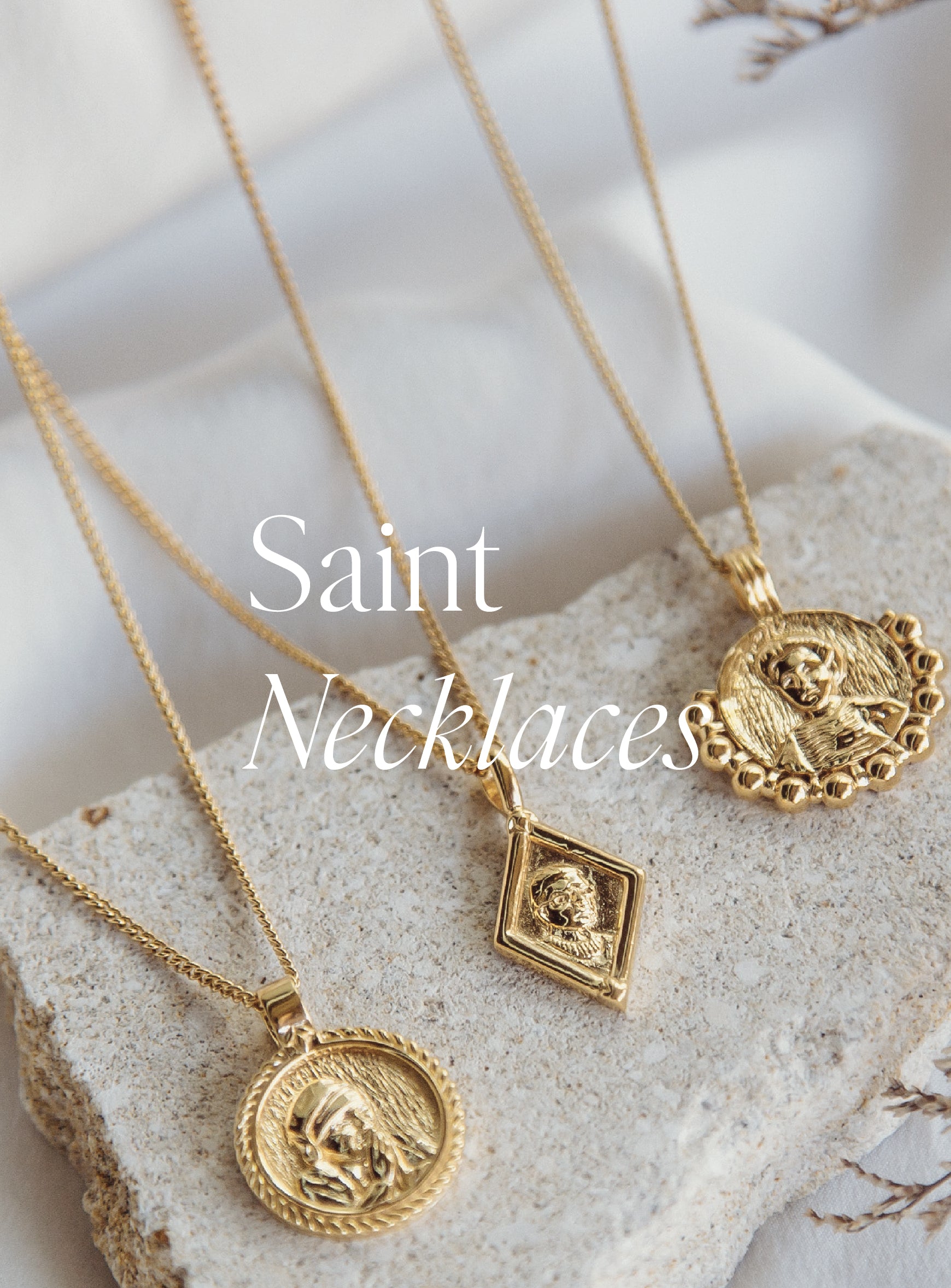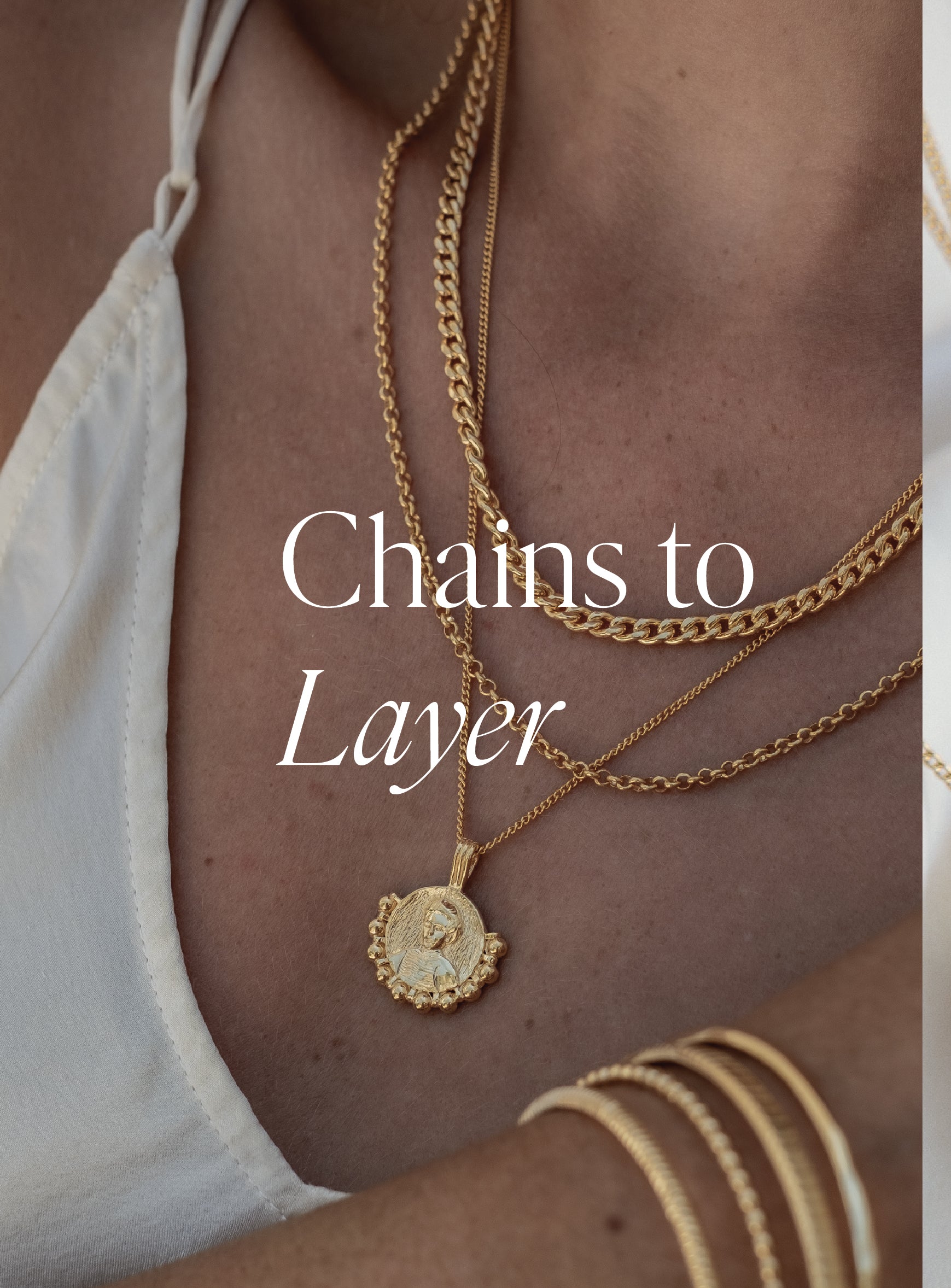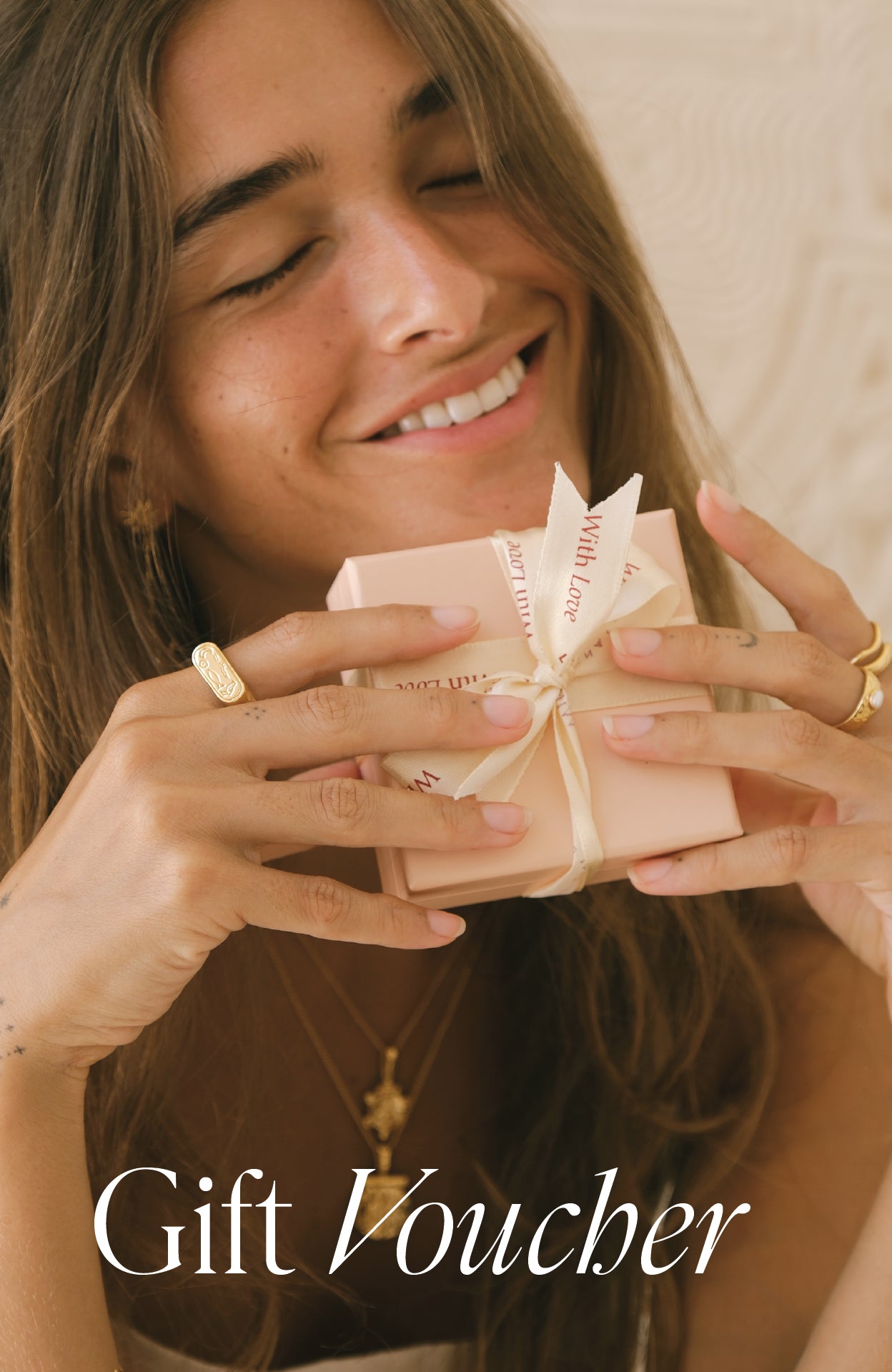
There’s a lot of chat out there about jewellery and we wanted to debunk a few of the myths that you may have heard over the years. From the history of Pearls to the truth about Solid Gold. Here are 8 Jewellery Myths debunked - So you can sleep easy (and let your Aunty know the real deal over your next family dinner) sharing the real facts about tarnishing, Gold, pearls and much more.
1. WEARING OUR JEWELLERY IN THE OCEAN WILL MAKE IT TARNISH
FALSE.
This is where shopping mindfully for jewellery pays off… literally. A lot of jewellery is made with a base metal of Brass which contains Copper… which tarnishes easily (not to mentino irritates the skin) Our pieces are made with high-quality Sterling Silver + have a layer of Anti-Tarnish on them to protect your pieces. While we don’t recommend swimming in your pieces to ensure they continue look shiny & bright, it certainly will not tarnish your piece going with a swim in big blue & choose your jewellery brands wisely!
2. YOU DON'T NEED TO CLEAN JEWELLERY
FALSE.
Sorry folks, just like your favourite dress, your jewellery needs a polish up to remove dust build up, dirt, chemicals and any other nasties that jewellery attracts on your daily wear. We suggest using a quality Jewellery Polishing cloths like these amazing polishing cloths available online to polish off any dirt of chemicals every 2-3 weeks. However if you dont have a polishing cloth you can start with using a soft cotton or Microfibre cloth that you have around home. Another great idea to clean your jewellery is to use a dry toothbrush to get into the nitty gritty areas and remove any dust and dirt build up (Watch this space we will share some cleaning tips with you soon OR, check out or recent cleaning video over on our IG)

3. LAYERING NECKLACES CAUSES THEM TO TANGLE
FALSE.
We even recently created a video to show you an extra handy hack if you are dubious about this (Head to the top of our IG and watch the pinned post). We suggest only wearing necklaces made from the same metal (Ideally Sterling Silver or Solid Gold) so they are the same weight & shine. Cheaper necklaces made from Brass tarnish easily which can rub off onto other pieces so ideally choose your layers consciously.
Although the majority of Pearls come from oysters or mussels, there are other species that produce Pearls. These include the: Melo Melo marine snail which produces an orange-brown Pearl, The queen conch Strombus Gigas which creates the Pink Conch Pearl and the blue-purple-green iridescent Abalone Pearl comes from the Haliotis Iris mollusc. Pearls can also be made in Saltwater AND freshwater.
4. YOUR JEWELLERY METALS SHOULD ALWAYS MATCH
FALSE.
Umm, hello freedom of style! Don’t get us wrong, we love a matching set (Hello CINDI collection) but it is certainly false that you have to match your jewellery on the daily. Our ethos is to wear whatever pieces you love, look cute in and enjoy wearing pieces that mean something to you - Not what metal colour it is! Mixing Metals not a style faux pas so switch up your jewellery as much as you want. Get playful and break the rules. Layer Necklaces (We love a textured chain with our popular Saint Pendants), stack heirloom rings with your matching BFF ring, stack your earrings with Silver & Gold, Studs & Hoops, stack your arm with bracelets collected from your travels…

5. GOLD COMES IN DIFFERENT COLOURS
FALSE.
Natural gold comes only in one colour -the classic yellow. The different gold colours that we see in jewellery are created by mixing other metals with the gold to give the various shades of yellow gold. Rose gold is made by adding silver and copper in varying proportions to provide different rose gold shades. White gold is created through a mixture of white metals such as palladium and silver with natural gold. Along with the metals mixed with the yellow gold to make white gold, the metal is then coated with rhodium to give an attractive sheen and add durability
6. PEARLS WILL DISSOLVE IN VINEGAR
TRUE.
OK, this is only slightly true! In practice though, a pearl will only dissolve in vinegar over a very long period. If you’re one for legends, the story goes that Cleopatra dissolved a valuable Pearl in vinegar and drank it to show off her wealth to Mark Antony…. Cute, but we don’t recommend it.

7. GOLD IS MORE RARE THAN SILVER
FALSE.
Beneath the earth's surface gold is about 19 times as rare as silver; however, today, there is a silver shortage! Less silver is mined than the world needs for jewellery and industrial purposes. There is, according to some research, around six times as much gold above ground than silver.
8. ALL PEARLS COME FROM OYSTERS
FLASE.
Although the majority of Pearls come from oysters or mussels, there are other species that produce Pearls. These include the: Melo Melo marine snail which produces an orange-brown Pearl, The queen conch Strombus Gigas which creates the Pink Conch Pearl and the blue-purple-green iridescent Abalone Pearl comes from the Haliotis Iris mollusc. Pearls can also be made in Saltwater AND fresh water.







